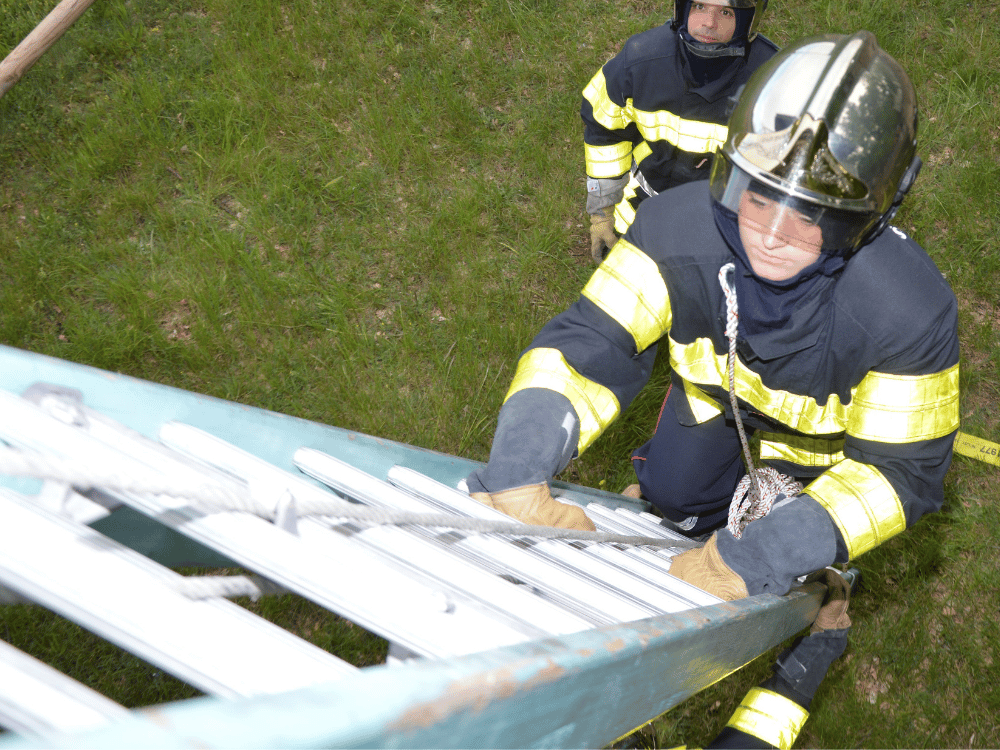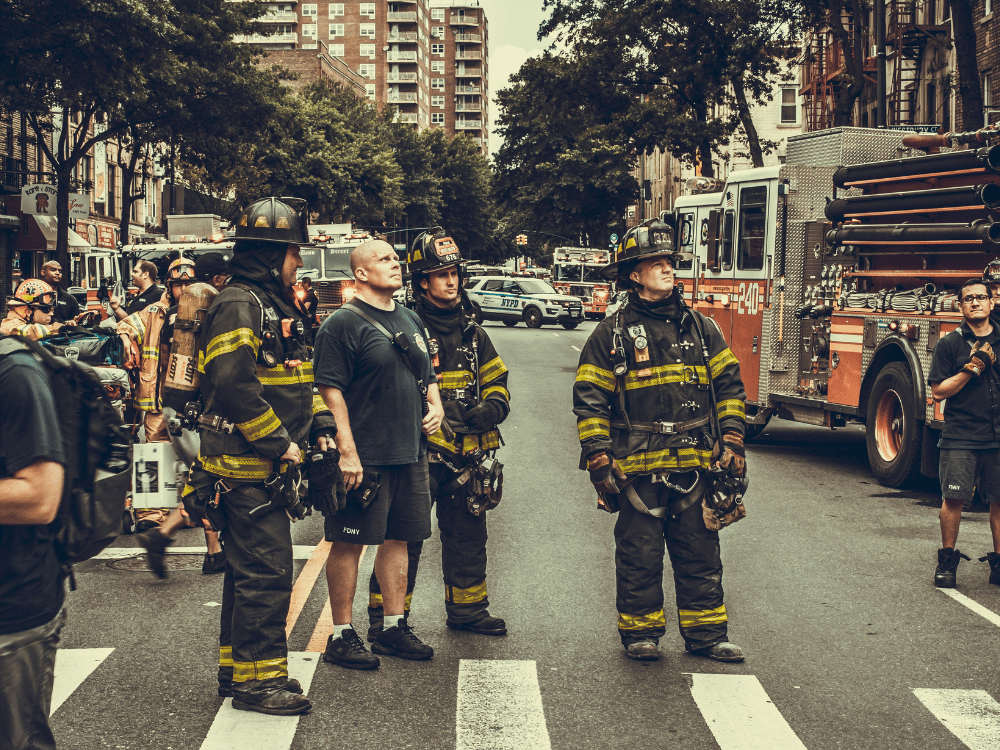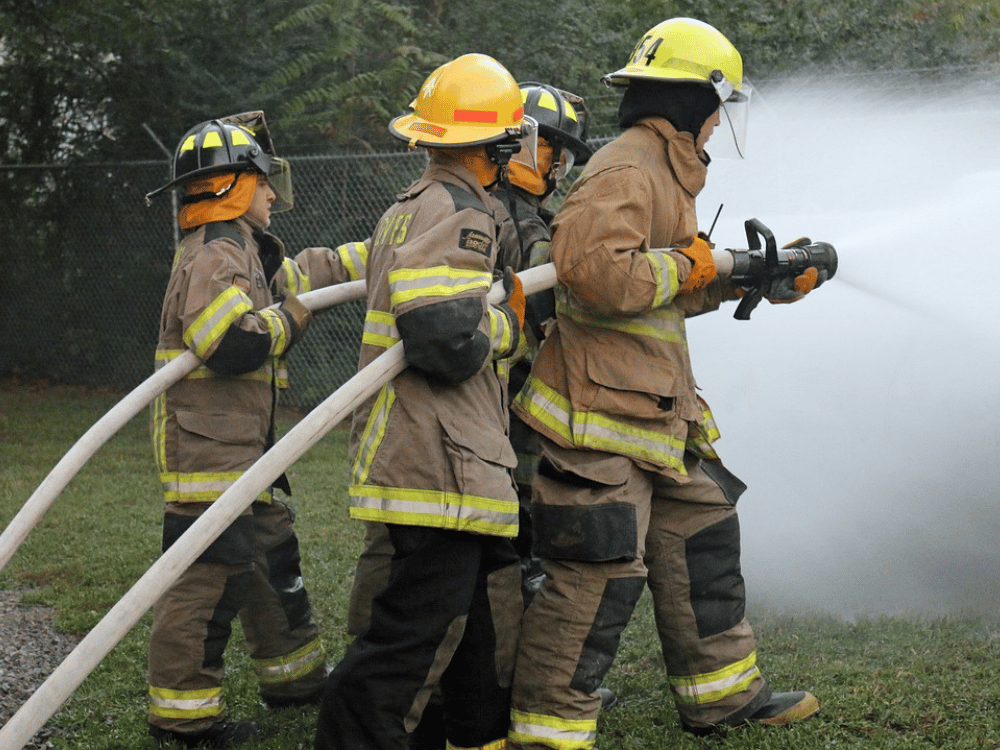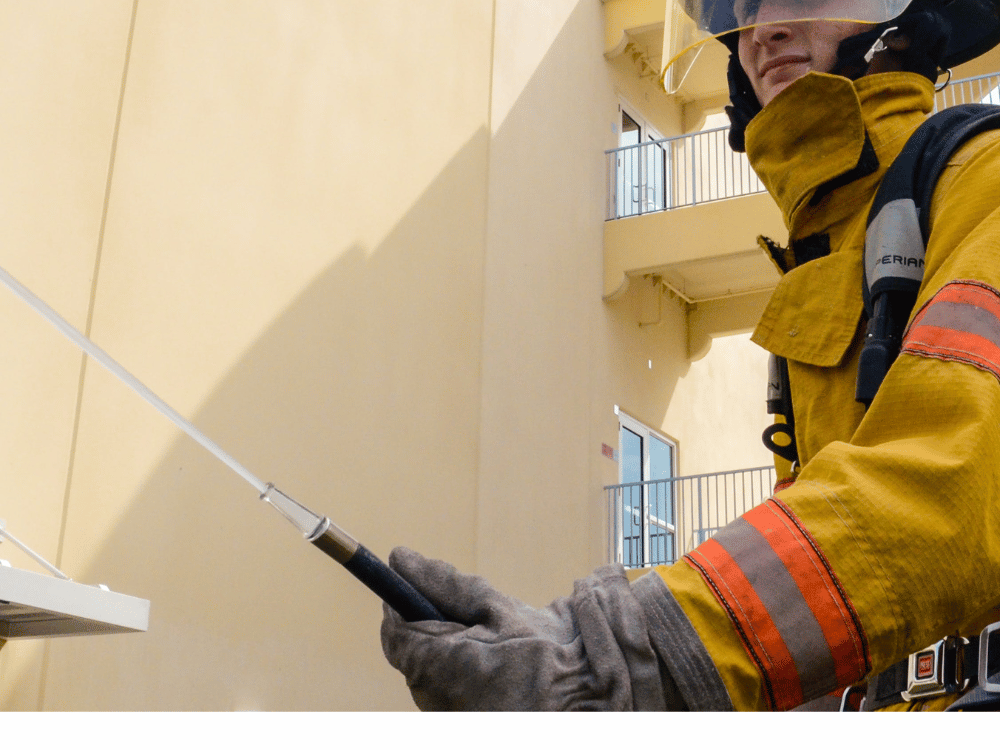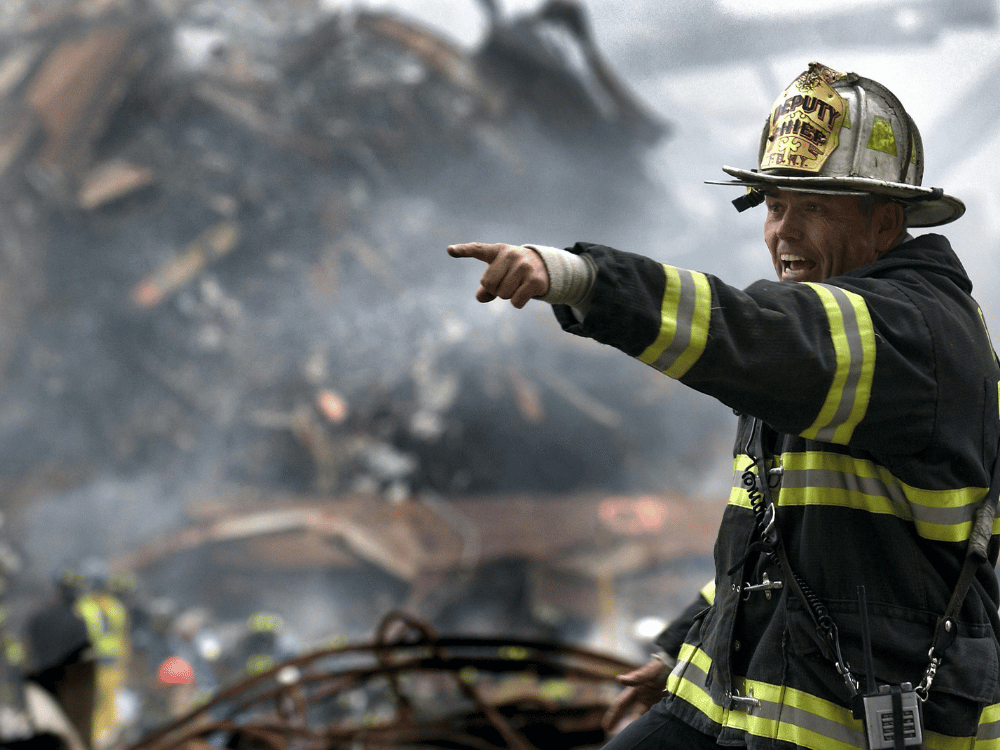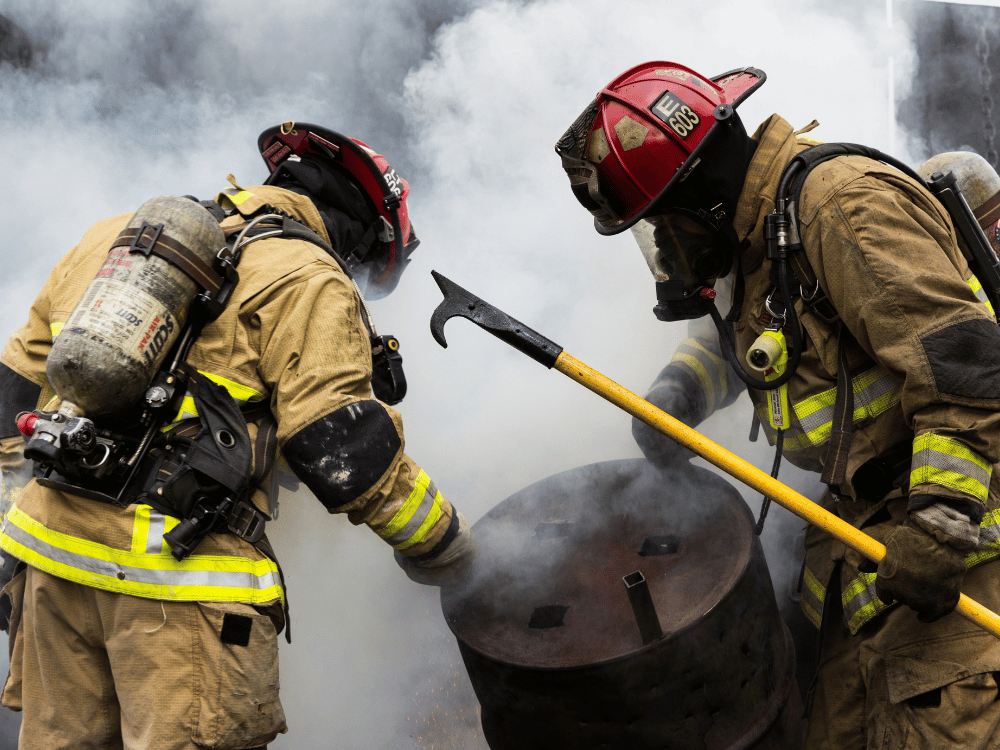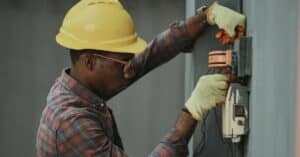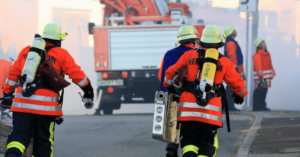Having a sufficient Fire Strategy Plan is incredibly important for businesses. In fact, having a robust approach in place could’ve saved high-street retail giant New Look from a £400,000 fine. When a blaze in their Oxford Street store took three days, 35 engines, and 150 fire-fighters to tackle, it disrupted trade to 50 other shops back in 2007.
But what is a fire strategy, how do you know when you have an effective one, and who can create them?
What is a Fire Strategy?
Fire Strategy Plans outline the measures and procedures every premises must implement to prevent the cause and spread of fires.
Different from fire risk assessments, these checks are more complex and offer a tailored review of all aspects of a building’s fire safety features.
Reviewing elements such as construction, escape routes, equipment (e.g., safety lighting and extinguishers), and internal protection measures among other areas.
A Fire Strategy Plan provides the initial framework on which effective fire risk assessments can be performed.
A helpful way to distinguish Fire Strategy Plans from fire risk assessments is – strategy deals with building regulation compliance, while risk assessments are regular checks once the building is in use.
What is a Cause-And-Effect Fire Strategy?
A cause-and-effect fire strategy takes into account elements such as your building’s type, layout, and contents before designing an alarm system to tackle the potential causes and effects of a fire.
As such, cause-and-effect alarm systems ensure that the fire safety devices in your building are tailored to the specific associated risks.
So, now we know that a Fire Strategy Plan is important, but is it unlawful to not have one in place?
Is a Fire Strategy a Legal Requirement?
All businesses are legally required to perform the duties outlined in the Regulatory Reform (Fire Safety) Order 2005.
However, Fire Strategy Plans make up part of BS 9999, which is the British Standard for fire safety in the design, management, and use of buildings – which, alone, is not a legal requirement. But there is a broader point to explore here.
While BS 9999 is not legally binding, Regulation 38 of the Building Regulations 2010 (which are legal requirements) states that:
“The person carrying out the work must give fire safety information to the responsible person no later than—
(a)where the building, proposed building, or extension to which the building work relates is not occupied during the building work, the date of completion of the work or the date of occupation of the building or the extension, whichever is the earlier;
(b)in any other case, the date of completion of the work.”
So, what should your strategy include?
What Should a Fire Strategy Include?
A fire strategy example should include the following key components:
1. Fire Strategy Drawing
Fire strategy drawings are scaled depictions of your building that give employees, customers, contractors, or other visitors a visual layout of the whole premises.
2. Fire Strategy Report
Your fire strategy report should overview the systems to be implemented in the event of a fire. These systems or procedures could include actions taken on a construction basis, as well as staff training and mapping of escape routes.
Organised measures outlined in the fire strategy report help to slow the spread of a blaze, thus reducing the risk to life and property damage.
3. Fire Prevention Measures
A strong fire strategy should also include instructions on fire prevention methods. Some examples are:
- Identify all potential fire hazards in the workplace and take steps to mitigate them.
- Keep all exits and fire extinguishers clear and unobstructed.
- Ensure safe storage of combustible materials.
- Adhere to COSHH regulations when storing hazardous chemicals.
- Sufficient fire safety training for employees.
- Conduct regular fire drills.
- Test fire alarms and smoke detectors regularly.
4. Early Detection and Warning Systems
Depending on the type of building and industry, it may be necessary to up-weight the level of fire detection services.
For example, locations such as gas works, petrol stations, laboratories or other environments with high levels of combustible material require links to rapid-response alarm systems.
These systems feature signal-receiving centres for quick deployment of fire and rescue services.
5. Evacuation Plans and Escape Routes
This section analyses the distance to escape routes from all areas of the building and the efficacy of emergency lighting and signage.
In addition, evacuation plans evaluate locations of ultimate safety around your premises. These areas should be suitable and sufficient for all of your building’s inhabitants.
6. Passive Fire Protection Systems
Analysing the levels of internal protection for escape routes and the prevention of fire and smoke spreading.
Passive fire protection measures include elements like fire doors, fire-resistant materials, cavity barriers, etc.
These measures protect escape routes by preventing the spread of fire and smoke.
7. Control Measures for Fire
Another check is to measure and moderate the threat of fire spreading both internally and externally.
Control measures review elements like cladding, rooves, and the potential of heat transfer to adjacent buildings.
Implementing sprinkler systems or appropriate ventilation is usually recommended for effective fire control – alongside those passive protections outlined above.
8. Firefighting Equipment and Measures
Not only does this element of the strategy highlight the placement of items such as extinguishers, blankets, and call points, but it also reviews external and internal emergency access.
The location of hydrants, access points and emergency lifts are all crucial parts of this process.
Fire Strategy Plan Training
Fire Strategy Plans should only be drawn up by a competent person. The Fire Safety Order 2005 (FSO) highlights that a responsible person (either the business or building owner) can designate a competent person or fire warden to complete fire safety duties.
However, to achieve competency, employees should have completed relevant training courses such as:
That being said, in more complex buildings, you may need to enlist the assistance of an accredited fire risk assessor or fire engineer.
Roles and Responsibilities in Fire Strategy Planning
Fire Strategy planning considers all areas and elements of your building and ensures it is up to regulations.
However, you’ll also need to install a competent team to ensure fire safety standards are adhered to.
The responsible person should schedule regular fire assessments. Following that, implementing one or more fire wardens (depending on the size and functionality of your premises) is a great next step in achieving compliance.
Fire wardens ensure you remain compliant by conducting regular fire risk assessments and recording any findings.
Recording the successful completion of assessments is an essential point to fire strategy. One of the reasons owners of the Chumleigh Lodge in London were fined £210,000 in 2012, following a blaze in 2008, was because they could not provide evidence that any suitable fire risk assessment was produced.
Those scheduled checks should also include regular fire and smoke alarm tests, evacuation drills, and a clear knowledge of the chain of command.
Establishing these elements is crucial to ensuring everyone in your premises knows their role, how to behave, and where to go in the event of a fire.
Seven Basic Fire Safety Control Measures
Fire safety control measures don’t just apply to specialists completing building work on your premises.
As the responsible person, you are also accountable for ensuring employees are well-trained and passive measures are maintained to the highest standards.
- Creation and practice of a fire evacuation plan.
- Removal of fire hazards.
- Regular testing of fire detection systems.
- Well-maintained firefighting equipment.
- Clear signage & emergency lighting
- Trained fire wardens on staff.
- Clear and sealed fire doors.
These seven measures will help prevent the outbreak, spread and cost of a fire in your workplace – both in terms of damage and risk to life.
So, how do you know when you have an effective strategy?
How to Review a Fire Strategy Plan
It’s good practice to review your Fire Strategy Plan annually. Not only does this mean you stay entirely updated with all the latest legislation and guidance, but it also ensures your building and occupants remain safe.
Working with a competent person or an external body, the responsible person should review plans, ensuring they are specific and comprehensive – relevant to your premises and industry.
Every premises should have safety procedures in place to align with its unique layout and application.
Regular checks can also mean you stay across crucial elements, such as –
- Staff training
- Equipment maintenance
- Evacuation plans
- Access points
Best Practices for Fire Strategy Planning
Continuing on the subject of regular checks and preparedness, as Benjamin Franklin famously said, “By failing to prepare, you’re preparing to fail.”
A great readiness strategy is having a list of best practices to maintain high response standards.
Some examples of good practices to install and repeat regularly are:
- Communication of processes
- Equipment reviews
- Fire awareness campaigns (these could be stuck to bulletin boards in meeting and breakout rooms or lunch areas)
- Involvement of key stakeholders to demonstrate board buy-in
- Regular fire risk assessments and standard risk assessments
- Commitment to staff training (IOSH or NEBOSH courses are perfect)
- Practice drills to measure efficacy
Fire Strategy Examples
As we mentioned earlier, a robust Fire Strategy Plan example would include six key components:
- Risk profile – this is unique to your business and premises to ensure tailored safety measures are in place.
- Detection and warning systems – what alarms, detectors, and other safety measures should you have in place? Where should they be situated?
- Means of escape – how far can you be from a designated escape route? Are those routes easy to discover/navigate? Are they well-lit and signposted? And do they take occupants to an ultimate place of safety?
- Internal fire spread – what systems are in place to stem the spread of fire and smoke?
- External fire spread – what are the risks of heat transference to other neighbouring or adjacent buildings? Are there any additional risks attached to those premises and their contents?
- Access to the building and firefighting equipment – can the premises still be entered safely and quickly by emergency services in the event of a fire? Additionally, are there operational emergency lifts in place to reach all areas of the premises?
Frequently Asked Questions (FAQs)
Here are some more frequently asked questions regarding Fire Strategy Plans.
How Much Does a Fire Strategy Plan Cost?
The annual cost of a Fire Strategy Plan can vary anywhere from £200 – £1,200. There are unavoidable costs if you have a complex building and need to outsource your fire strategy plans to an accredited fire engineer. However, for simple buildings, you may be able to train your staff to become competent.
Who Pays For Fire Risk Assessment?
Generally speaking, it is the role of the responsible person to pay for fire risk assessments. This can be the building or business owner.
What is Regulation 38 of the Building Regulations?
Regulation 38 of the Building Regulations states that fire safety info must be passed from the construction team to the premises’ responsible person no later than the completion date or date of occupation, whichever is earlier.
Who Prepares a Fire Strategy?
A competent person should prepare your fire strategy. In a simple building with a low risk of fire, this can be a trained individual like a fire warden.
However, plans should be drawn up by an accredited fire risk assessor or fire engineer in complex buildings or those with a high fire risk.
Is a Fire Strategy a Fire Risk Assessment?
No. A fire strategy is a plan put in place at the time of construction to outline fire safety measures in a building. Meanwhile, a fire risk assessment is a regular review of all internal fire safety procedures and equipment.
Conclusion
A Fire Strategy Plan is integral to ensuring your premises remain compliant with building regulations and safe for occupants.
However, depending on your business’s industry and building complexity, you may be able to avoid costly checks while improving the prospects of your team by enrolling them in safety training courses like these:
Learn more about TSW Training’s latest fire safety courses and improve your resources in fire safety compliance all in one go.

